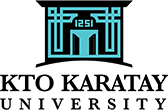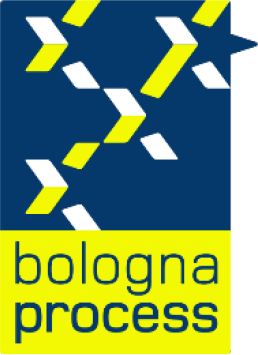Medical Imaging Techniques
Course Details

KTO KARATAY UNIVERSITY
Vocational School of Medical Services
Programme of Medical Imaging Techniques
Course Details
Vocational School of Medical Services
Programme of Medical Imaging Techniques
Course Details

| Course Code | Course Name | Year | Period | Semester | T+A+L | Credit | ECTS |
|---|---|---|---|---|---|---|---|
| 02920001 | Parenteral Applications | 1 | Spring | 2 | 2+0+2 | 5 | 5 |
| Course Type | Compulsory |
| Course Cycle | Associate (Short Cycle) (TQF-HE: Level 5 / QF-EHEA: Short Cycle / EQF-LLL: Level 5) |
| Course Language | Turkish |
| Methods and Techniques | - |
| Mode of Delivery | Face to Face |
| Prerequisites | - |
| Coordinator | - |
| Instructor(s) | Lect. Funda GÜRBÜZ |
| Instructor Assistant(s) | - |
Course Instructor(s)
| Name and Surname | Room | E-Mail Address | Internal | Meeting Hours |
|---|---|---|---|---|
| Lect. Funda GÜRBÜZ | B-Z28 | [email protected] | 7522 | Monday 10:10-11:45 |
Course Content
This course; Definition of health - health care process and basic concepts, Patient Safety Practices - I (Patient information verification, Blood transfusion follow-up process, Catheterization process tracking), Patient Safety Practices - II (Wound and care, Digestive System Applications, Urinary System Applications, Respiratory System Applications, Shock and Types), Infection Control Applications-I (Asepsis-Antisepsis-Sterilization-Disinfection applications-Hand hygiene and glove use, Sterile unpacking techniques), Infection Control Practices-II (Standard precautions and isolation applications, Medical waste management, Employee Safety), Infection Control Practices-III (Employee Safety, Penetrating injuries, Procedures to be applied), Evaluation of Vital Signs, Parenteral Drug Use information, Vascular access and blood collection technique, Intravenous drug applications (Intravenous catheter insertion and removal, Serum insertion, serum types), Intramuscular and subcutaneous drug applications, Local drug applications (Rectal drug administration, Ear-Eye-Nose drug applications), Blood glucose measurement, Urinary catheter insertion-removal; Includes topics.
Objectives of the Course
The aim of this course is to provide students with various skills necessary for clinical practice.
Contribution of the Course to Field Teaching
| Basic Vocational Courses | X |
| Specialization / Field Courses | |
| Support Courses | |
| Transferable Skills Courses | X |
| Humanities, Communication and Management Skills Courses |
Relationships between Course Learning Outcomes and Program Outcomes
| Relationship Levels | ||||
| Lowest | Low | Medium | High | Highest |
| 1 | 2 | 3 | 4 | 5 |
| # | Program Learning Outcomes | Level |
|---|---|---|
| P1 | Has the knowledge to evaluate and apply shooting positions related to the field of medical imaging techniques, technical infrastructure and physics principles of imaging devices, radiation safety and radiation protection rules, pharmacological structures of contrast agents, side effects and risk factors, and uses applied knowledge. | 4 |
| P2 | Has knowledge of general medical terms, first aid issues related to anatomical and physiological issues related to the field of health, and uses applied knowledge. | 3 |
Course Learning Outcomes
| Upon the successful completion of this course, students will be able to: | |||
|---|---|---|---|
| No | Learning Outcomes | Outcome Relationship | Measurement Method ** |
| O1 | Ability to express the necessary theoretical knowledge in imaging processes in the field of medical imaging techniques. | P.1.1 | 1 |
| O2 | Ability to understand the application requirements of imaging processes in the field of medical imaging techniques by associating them with theoretical foundations. | P.1.2 | 1 |
| O3 | Ability to apply theoretical knowledge of imaging processes in the field of medical imaging techniques on the patient. | P.1.3 | 1,7 |
| O4 | Ability to compare and analyze the application results of different approaches in imaging processes in the field of medical imaging techniques. | P.1.4 | 1 |
| O5 | Ability to develop strategies in imaging processes in the field of medical imaging techniques. | P.1.5 | 1 |
| O6 | Ability to evaluate the information obtained in the field of medical imaging techniques. | P.1.6 | 1 |
| O7 | Ability to express basic theoretical knowledge about the field of health. | P.2.1 | 1 |
| ** Written Exam: 1, Oral Exam: 2, Homework: 3, Lab./Exam: 4, Seminar/Presentation: 5, Term Paper: 6, Application: 7 | |||
Weekly Detailed Course Contents
| Week | Topics |
|---|---|
| 1 | Definition of health - health care process and basic concepts |
| 1 | Introduction to Medical Microbiology and Infectious Diseases (General Characteristics of Viruses, Bacteria, Parasites and Fungi) |
| 2 | Patient Safety Practices- I (Patient information verification, Blood transfusion follow-up process, Catheterization process follow-up) |
| 3 | Patient Safety Practices -II (Wound and care, Digestive System Applications, Urinary System Applications, Respiratory System Applications, Shock and Types) |
| 4 | Infection Control Applications-I (Asepsis-Antisepsis-Sterilization-Disinfection applications-Hand hygiene and use of gloves, Sterile package opening techniques) |
| 5 | Infection Control Practices- II (Standard precautions and isolation Practices, Medical waste management, Employee safety) |
| 6 | Infection Control Practices-III (Employee Safety, Penetrating tool injuries, Procedures to be followed) |
| 7 | Evaluation of Life Findings |
| 8 | Parenteral Drug Use information |
| 9 | Vascular access and blood collection technique |
| 10 | Intravenous drug applications (Intravenous catheter insertion and removal, serum insertion and removal, serum types) |
| 11 | Intramuscular and subcutaneous drug administration |
| 12 | Local drug applications (Rectal drug administration, Ear-Eye-Nose drug applications) |
| 13 | Blood Sugar Measurement |
| 14 | Urinary catheter insertion and removal |
Textbook or Material
| Resources | At the end of the course, students will be given a lecture grade on the topics covered. * Ay F, Basic Concepts and Skills in Health Practices, Istanbul Medical Bookstore, 2011 * Aşti T, Karadağ A, Clinical Skills, Nobel Medical Bookstore, 2011 * Taylor, C., Lillis, C., Lemone, P .; Fundamentals of Nursing. Lipincott Company, Philadelphia, second edition, 2007 * Sabuncu, N., Alpar, Ş., Özdilli, K et al. Edt: N. Sabuncu. Principles in Nursing Care and apps. alter Publishing House, 2008 |
Evaluation Method and Passing Criteria
| In-Term Studies | Quantity | Percentage |
|---|---|---|
| Attendance | - | - |
| Laboratory | 1 | 10 (%) |
| Practice | - | - |
| Field Study | - | - |
| Course Specific Internship (If Any) | - | - |
| Homework | - | - |
| Presentation | - | - |
| Projects | - | - |
| Seminar | - | - |
| Quiz | - | - |
| Listening | - | - |
| Midterms | 1 | 40 (%) |
| Final Exam | 1 | 50 (%) |
| Total | 100 (%) | |
ECTS / Working Load Table
| Quantity | Duration | Total Work Load | |
|---|---|---|---|
| Course Week Number and Time | 14 | 2 | 28 |
| Out-of-Class Study Time (Pre-study, Library, Reinforcement) | 14 | 2 | 28 |
| Midterms | 2 | 20 | 40 |
| Quiz | 0 | 0 | 0 |
| Homework | 0 | 0 | 0 |
| Practice | 0 | 0 | 0 |
| Laboratory | 14 | 2 | 28 |
| Project | 0 | 0 | 0 |
| Workshop | 0 | 0 | 0 |
| Presentation/Seminar Preparation | 0 | 0 | 0 |
| Fieldwork | 0 | 0 | 0 |
| Final Exam | 1 | 26 | 26 |
| Other | 0 | 0 | 0 |
| Total Work Load: | 150 | ||
| Total Work Load / 30 | 5 | ||
| Course ECTS Credits: | 5 | ||
Course - Learning Outcomes Matrix
| Relationship Levels | ||||
| Lowest | Low | Medium | High | Highest |
| 1 | 2 | 3 | 4 | 5 |
| # | Learning Outcomes | P1 | P2 |
|---|---|---|---|
| O1 | Ability to express the necessary theoretical knowledge in imaging processes in the field of medical imaging techniques. | 4 | - |
| O2 | Ability to understand the application requirements of imaging processes in the field of medical imaging techniques by associating them with theoretical foundations. | 4 | - |
| O3 | Ability to apply theoretical knowledge of imaging processes in the field of medical imaging techniques on the patient. | 4 | - |
| O4 | Ability to compare and analyze the application results of different approaches in imaging processes in the field of medical imaging techniques. | 4 | - |
| O5 | Ability to develop strategies in imaging processes in the field of medical imaging techniques. | 4 | - |
| O6 | Ability to evaluate the information obtained in the field of medical imaging techniques. | 4 | - |
| O7 | Ability to express basic theoretical knowledge about the field of health. | - | 3 |
